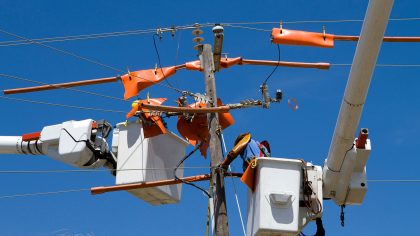World Needs New Offshore Oil Investments (via Reuters)
Higher investments in offshore oil production are critical to avoiding a supply squeeze by 2020, as expanding shale output will not match projected demand increases in the next few years, U.S. oil producer Hess Corp. said on Thursday. The past four years of low oil prices have major producers pulling back on needed offshore investment, and the gap between supply and demand should help prices rebound, Hess Chief Operating Officer Greg Hill said at an energy conference at Rice University’s Baker Institute. 
New Gasoline Discount Card Debuts in the U.S. (via Detroit Free Press)
GasBuddy, an information technology firm that tracks fuel prices at gas stations across the American landscape, has announced a new program aimed at drivers who would like to save a few cents per gallon each time they fill up with gasoline or diesel. The “Pay with GasBuddy” offer consists of an electronic discounts card that must be connected to a bank account, which means that drivers will have to pay with their debit cards in order to benefit from the program. The first time at the pump, drivers will save 15 cents per gallon; subsequent refill will net savings of 5 cents per gallon.
Charging Plug-In Electric Vehicles With a Smartphone (via Venture Beat)
In the near future, American drivers will be able to recharge their electric vehicles without fumbling with cash or credit cards. The future of electrically charging your vehicle is hands-free; ChargePoint, the largest network of charging stations in the U.S., has announced a new feature that will allow drivers to “tap and charge” with their smartphones, tablets or smart watches. Not all mobile devices will work with this new system; you will need Android 4.4 and higher with Near-Field Communications (NFC) technology, an iPhone 6 or higher, or the new Apple Watch.

Energy Sector Attracts More Investors (via Barrons)
Crude oil prices are expected to maintain prices around $50 per gallon in 2018; currently, this estimate may not sound like much, however, it certainly indicates an improvement for the battered oil industry, which is once again attracting investors to its midst. According to a recent article published by Barron’s, Goldman Sachs analysts feel pretty upbeat about the gradual return of investors to the energy sector, particularly because they know that the major oil companies are investing in renewable energy projects instead of trying to squeeze more profits from petroleum, an energy source that is not as profitable as it used to be.
Reconstruction of Puerto Rico May Feature Smart Grid (via LA Times)
The U.S. territory of Puerto Rico is struggling to recover from the devastation left by two hurricanes this year; one of the biggest challenges thus far has been the total destruction of the power grid, which is exacerbating conditions at local hospitals. Officials do not expect to be able to restore electrical service for a few months, but engineers are already looking towards the future of the island. The potential of installing a smart grid network with underground cables and advanced backup systems is being discussed. Smart grids also offer the benefit of regulating output so that excess energy is stored by battery charging systems that would replace generators, which have been operating intermittently on the island due to fuel shortages.


